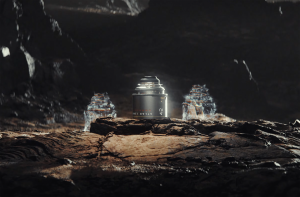You’ve seen movies and read books, but do you really know how to write a plot? In this article, we break down the basics of writing a cohesive plot.
Stories, whether they’re told on paper or on a large screen, have a beginning, middle, and end. That’s the way it’s always been, and it’s the way it will always be. Why? Because it works. Or. as Kurt Vonnegut put it, “I don’t praise plots as accurate representations of life, but as ways to keep readers reading.” In other words, the plot keeps audiences hooked.
Like many terms tossed around in the film industry, plot, like the ambiguous “producer,” can be confusing. Is the plot not the same as the story, for example? Well, yes and no. Below, we’ll dive deeper into the meaning of the word “plot,” the basics of plots, and how plots are structured. We’ll also include some examples of traditional and creative plot structures that break the rules.
Difference Between Plot and Story
It’s crucial to understand the distinction between a plot and a story, as the plot essentially serves as a vital component within the broader framework of the story. Although these terms are frequently employed interchangeably when discussing a film’s narrative, they are not synonymous. Think of the plot as the architectural blueprint that meticulously arranges events in a logical sequence. The plot creates seamless connections between scenes, all in the pursuit of crafting a cohesive and engaging narrative.
The plot, in essence, arranges events and unfolds them in a deliberate order that not only connects one scene to the next but also imparts a sense of purpose and direction to the overarching tale. It is the plot that weaves the intricate threads of cause and effect, hooking audiences with plot twists, on other plot devices designed to elicit a reaction. Possibly one of the greatest plot twists in modern cinema happens in Park Chan-wook’s Oldboy, delivering one of the most jaw-dropping truth bombs at the exact right time. But it’s only able to inflict maximum impact onto the audience because the filmmaker took his time laying the groundwork through the plot.
In essence, the plot is the guiding force that propels the story forward, providing structure and coherence to the narrative. Without a well-constructed plot, the story risks becoming a disjointed series of events lacking a clear trajectory or emotional resonance — like picking bingo numbers. Understanding the nuanced difference between plot and story is fundamental for any storyteller. It enables you to think deeper about the events in your story as you craft it, making you a better, more efficient screenwriter and filmmaker.
Plot Structure 101
The three-act structure is a commonly used framework in storytelling, especially in screenwriting and theater, but we can also apply it to other forms of storytelling, like novels and short stories. It provides a way to organize a narrative into three distinct sections, each serving a specific purpose in advancing the story and engaging the audience. These three acts are typically referred to as Act 1 (setup), Act 2 (confrontation), and Act 3 (resolution).
Here’s a brief overview of each act within the three-act structure:
Act 1 (Setup)
- Introduces characters, setting, and the central problem.
- Features the Inciting Incident, a critical event that sets the story in motion.
- Establishes the protagonist’s goals and themes while engaging the audience.
Act 2 (Confrontation)
- Often the longest part of the story.
- Act 2A (First Half) focuses on rising tension and initial attempts to overcome challenges.
- Act 2B (Second Half) includes a major turning point, escalating conflicts, and character growth.
Act 3 (Resolution)
- Contains the climax, the story’s highest point of tension.
- Resolves the central conflict and ties up loose ends.
- Completes character arcs, conveys the story’s message, and provides closure.
While the three-act structure is a helpful tool, not all stories fit it perfectly, so feel free to adapt and innovate to create engaging narratives.
The Hero’s Journey (Star Wars)
The Hero’s Journey is a classic narrative structure outlined by Joseph Campbell, and it is prominently featured in many stories, including the Star Wars franchise. In this framework, the hero embarks on an epic adventure, encountering various stages and challenges that lead to personal growth and transformation. The original Star Wars provides a clear example of this structure through the character of Luke Skywalker.
Luke Skywalker’s journey begins as an ordinary farm boy on Tatooine, representing the “Call to Adventure” stage. When he receives a distress message from Princess Leia, he is thrust into the role of the hero. His mentor, Obi-Wan Kenobi, guides him, exemplifying the “Meeting the Mentor” phase. Luke faces numerous trials, including rescuing Princess Leia, mastering the Force, and battling the Empire. These challenges embody the “Tests, Allies, and Enemies” phase. Ultimately, he confronts Darth Vader, the embodiment of evil, in the “Supreme Ordeal” phase. His victory marks his transformation into a Jedi, symbolizing the “Atonement with the Father” step. Returning to Tatooine as a changed person signifies the “Return with the Elixir” phase, bringing the hero’s journey full circle.
The Star Wars franchise masterfully weaves the Hero’s Journey into its plot, following Luke Skywalker’s transformation from an ordinary farm boy to a legendary Jedi Knight, making it a quintessential example of this timeless narrative structure.
Alternative Plot Structures and Other Plot Devices
In the world of storytelling, plot devices and narrative structures serve as the building blocks that shape and define the unfolding tales. These tools are the creative arsenal of authors, screenwriters, and directors, allowing them to craft engaging and memorable stories that captivate audiences. Plot devices, while great at shaking things up, can be gimmicky if used too often. Use them, but use them sparingly.
Flashback: a flashback is a plot device where the story temporarily shifts to an earlier point in time to provide context or reveal important information. For instance, in the movie The Godfather Part II, flashbacks are used to show the early life of Vito Corleone, shedding light on his character and motivations.
Foreshadowing: foreshadowing is a literary technique where hints or clues are dropped early in the story to suggest future events. In J.K. Rowling’s Harry Potter series, Professor Trelawney’s predictions often foreshadow key events in Harry’s life.
Nonlinear Narrative: this plot structure presents events out of chronological order. Pulp Fiction, directed by Quentin Tarantino, is a famous example. It weaves together multiple storylines that intersect at various points, creating a complex and engaging narrative.
In Medias Res: in medias res means starting a story in the middle of the action rather than at the beginning. Masters of the craft like Aaron Sorkin use this inexhaustibly, especially in The West Wing. Many other films and TV series use this technique to plunge the audience into the heart of the conflict, though action films like spy thrillers and heists do particularly well when paired with in medias res.
Unreliable Narrator: the unreliable narrator is used to throw off viewers by having them depend on the point of view of a protagonist who is not accurately portraying the events being told. David Fincher‘s Fight Club is a prime example of the unreliable narrator in modern film.
Parallel Plotlines: this involves two or more interrelated storylines running concurrently. Game of Thrones is an excellent example of this, with numerous characters and plotlines unfolding simultaneously.
Circular Plot: in a circular plot, the story ends where it began, creating a sense of closure and symmetry. One of the most famous examples in modern cinema is the film Inside Llewyn Davis directed by the Coen brothers, which crosses into the realm of sci-fi by putting the protagonist in a seemingly endless loop of singer-songwriter misery.
Reverse Chronology: this narrative technique tells the story backward, with events unfolding in reverse order. The film Memento, directed by Christopher Nolan, uses this structure to immerse viewers in the mind of the protagonist, who suffers from short-term memory loss.
These plot devices and alternative structures add depth and complexity to storytelling, allowing authors and filmmakers to engage audiences in unique and innovative ways. Each technique serves different narrative purposes, from building suspense and intrigue to exploring characters’ motivations and experiences in non-traditional ways.
Get Creative — Breaking Free of Traditional Plot Structures
Understanding the intricacies of a plot and how it relates to the larger story is the first step in becoming a screenwriter. Once you have your main plot beats, you can map them out in order to tell a cohesive narrative that captivates audiences. Knowledge of the three-act structure, the hero’s journey and the myriad plot devices at your disposal can further aid your storytelling. That said, hewing too close to traditional plot structures can also limit your creativity. After understanding the rules of creating a plot, you can deviate as you see fit in order to craft a plot that meets your creative vision for the story. Like all great art mediums, screenwriting is no different; you can break a few eggs to make an omelet.
Cover image via Freepik.
Looking for filmmaking tips and tricks? Check out our YouTube channel for tutorials like this . . .




